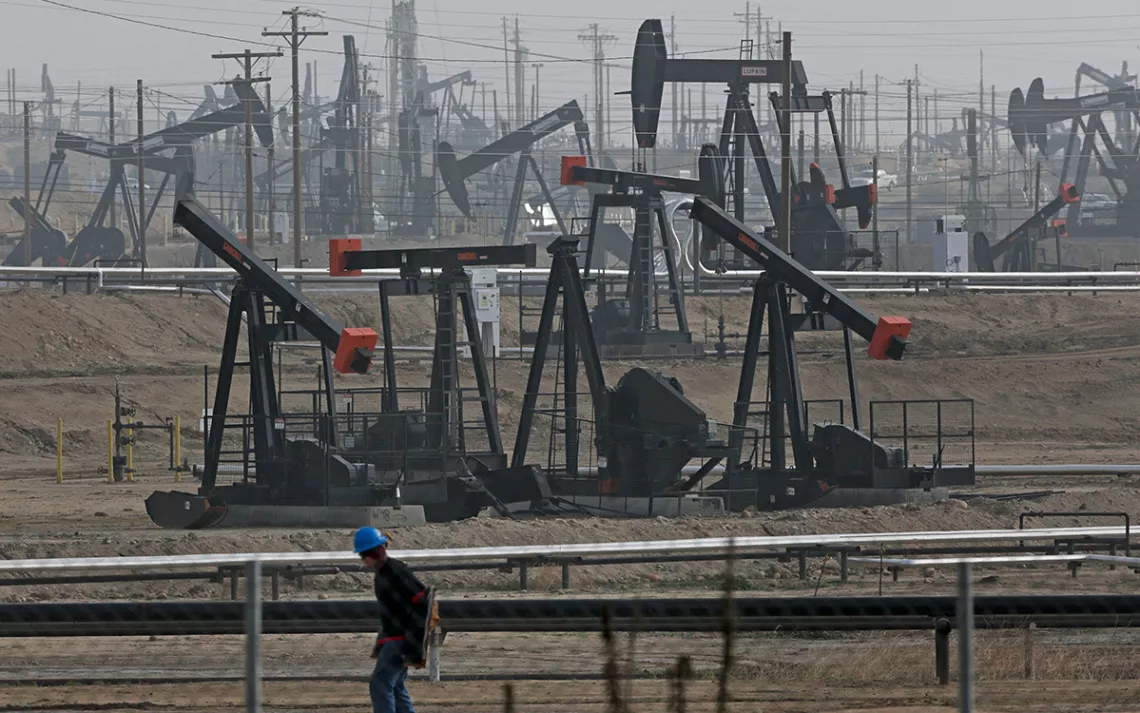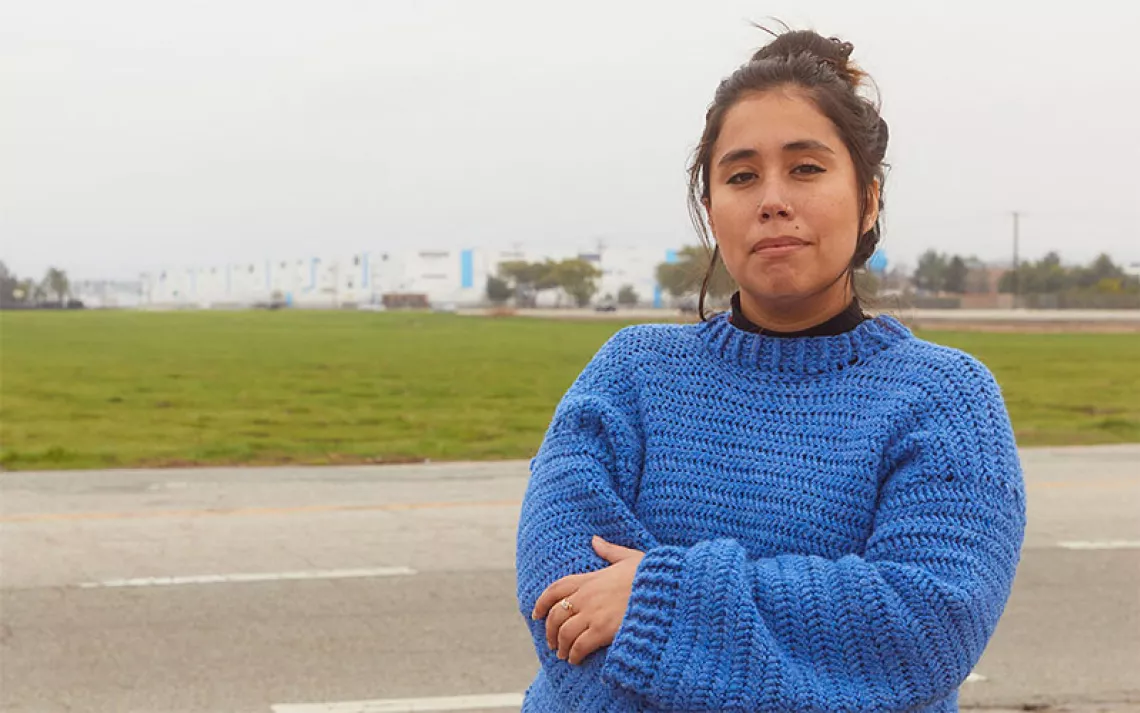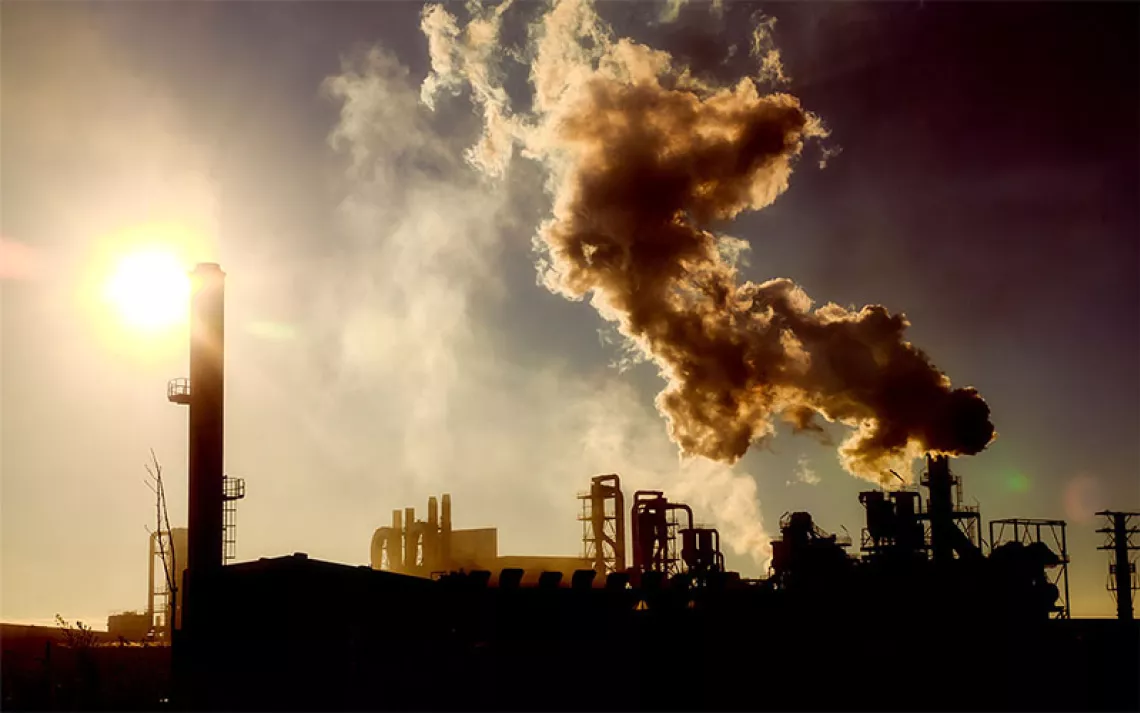Hotter Temperatures Mean Dirtier Air, Especially for People of Color
The new “State of the Air” report also shows that residents in the West suffer the most from air pollution

Pump jacks operating at the Kern River Oil Field in Bakersfield, California. | Photo by Jae C. Hong, AP File
On Labor Day weekend in 2020, a blistering heat wave sent thermometers throughout Southern California soaring. The extreme heat event shattered records: On September 6, Los Angeles County broke 120°F for the first time. That same day, LA residents were exposed to the worst smog pollution in nearly 30 years, with ozone levels hitting 185 parts per billion—a soup of dirty air that was highly dangerous to breathe, especially for the most vulnerable.
That record-setting heat event is just one example of how hotter temperatures from climate change will mean less clean air for more people, with an increased risk of major health impacts over time, from shortness of breath and asthma to coronary heart disease. According to the American Lung Association’s newest State of the Air report, those impacts are disproportionately felt by people of color and residents living in the western parts of the United States.
Between 2019 and 2021, nearly 120 million Americans lived in counties with unhealthy air, according to the new analysis. Of those, more than 64 million were people of color who live in a county with a failing grade for at least one of three measures of air pollution: short-term particle pollution, year-round particle pollution, and ozone pollution (also known as smog). People of color were 61 percent more likely than white people to live in such a county and more than three times as likely to live in a county that failed for all three measurements.
These trends increasingly prevail in the West, where hotter temperatures are affecting air pollution levels more than in any other region in the United States. In State of the Air’s list of the most polluted cities, more are located in the West than at any other time in the 24-year history of the annual report. The top five cities suffering most from short-term, year-round, and ozone pollution are in western states.
“What we’re seeing are the impacts of climate change."
“What we’re seeing are the impacts of climate change,” Paul Billings, the national senior vice president for public policy at the American Lung Association, told Sierra. “Wildfire is a big factor, especially for short-term particular pollution and ozone, but we’re also seeing more and more stagnant air from hot conditions, with oil and gas development a factor as well.”
People of color and low-income residents are more likely to live in communities with the greatest air pollution, in large part because major roadways, port hubs, power plants, freight hubs, refineries, and other industrial facilities are more often located next to the neighborhoods where they live. Communities with the higher pollution burden also tend to record higher incidents of health-related issues such as asthma attacks and chronic respiratory disease. According to State of the Air, 72 percent of those living in counties that get a failing grade for all three measurements of air pollution are people of color, compared to 28 percent who are white.
In California, nine out of 10 people regularly breathe dirty air, according to the report, with more than 98 percent of residents living in a community that scored a failing grade for one of the key air pollution measures. More than 4 in 10 Californians live in an area with failing grades for each pollutant. Bakersfield, California, is the worst-polluted city for short-term particle pollution and tied with Visalia, California, for the worst annual particle pollution, according to the report. Bakersfield lies in the heart of the Golden State’s Central Valley, where 25 percent of the nation’s food is produced. The city is surrounded by industrial animal farming, heavy vehicle transportation along busy Interstate-5, and oil and gas development, and its unique topography traps the air pollution created by those industries. According to a 2018 Environmental Health News investigation, one out of every 37 people in Kern County died of chronic respiratory disease between 2013 and 2016.
Combined with hotter days and more incidents of wildfire, several cities in California are seeing some of the worst air pollution on record. Fresno and Los Angeles round out the top five list of worst-polluted cities, with LA continuing to hold its perennial rank as the city with the worst smog in the United States. Long-term exposure to smog has been linked to everything from asthma attacks and stroke to child leukemia. In the three years covered by the report, seven of the 25 most polluted cities recorded their highest-ever number of days with unhealthy levels of dirty air.
The list of the cities enjoying the cleanest air include Asheville-Marion-Brevard, North Carolina; Bangor, Maryland; Rochester-Batavia-Semeca Falls, New York; and Honolulu, Hawai'i.
Since the passage of the Clean Air Act 50 years ago, there have been signs of a marked improvement in air quality. The ongoing effort to rein in pollution from tailpipe emissions, clean up the power grid, and reduce coal combustion also improved air quality, especially in the East and the Midwest, according to the analysis. Yet those gains have stalled in the past decade.
The American Lung Association is calling on the Biden administration to pick up the pace on recent proposals for cleaning up the air, such as cutting emissions from delivery vans and 18-wheel rigs. The organization is also calling for the administration to implement proposals that strengthen mercury and toxics standards for coal- and oil-fired power plants, cut greenhouse gas emissions from the power sector, and tighten the ozone and particle pollution ambient air quality standards. Scientific studies show that the current standards are too lenient, with public health impacted below those current standards. The Biden administration has called for strengthening the annual particle pollution standard to 9 or 10 micrograms per cubic meter. The American Lung Association is calling for a stronger standard limiting annual particle pollution to 8 micrograms per cubic meter and for strengthening the 24-hour particle pollution standard by capping it from 35 micrograms to 25.
“If the administration does follow through on this rule-making and get this work done, we’ll continue to see reductions in air pollution and we’ll also continue to address climate change,” Billings said. “That could have profound and significant impacts on public health.”
Residents can type in their zip code at stateoftheair.org to find out the state of the air in their county.
 The Magazine of The Sierra Club
The Magazine of The Sierra Club



